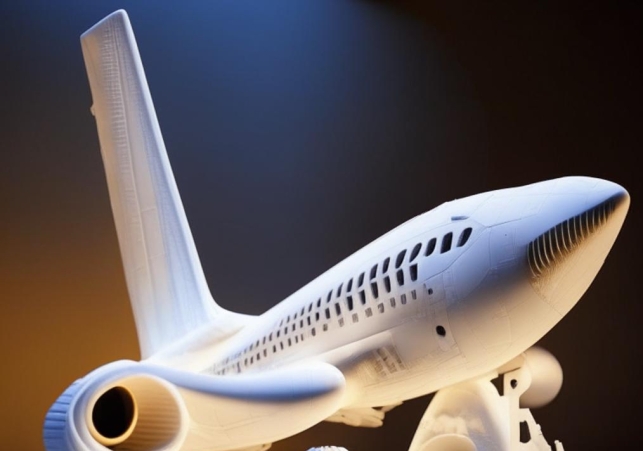
3D Printing in Aerospace & Drones manufacturing
3D printing has significantly impacted the aerospace and drones manufacturing industries, offering numerous benefits such as lightweight design optimization, rapid prototyping, customization, and cost savings. Here are some key applications of 3D printing in aerospace and drones manufacturing:
-
Lightweight and Complex Components: Aerospace and drone manufacturers can utilize 3D printing to produce lightweight components with intricate geometries. By optimizing designs for weight reduction and structural efficiency, 3D printing enables the creation of complex parts that would be difficult or impossible to manufacture using traditional methods. This helps to enhance fuel efficiency, reduce overall weight, and improve performance.
-
Rapid Prototyping and Iteration: 3D printing allows for the rapid production of prototypes, enabling engineers to test and iterate designs more quickly. This accelerated design process helps to identify and address potential issues early on, reducing development time and costs.
-
Customized Parts and Tooling: 3D printing enables the customization of parts and tooling for aerospace and drone manufacturing. Manufacturers can produce components tailored to specific requirements, such as individual aircraft configurations or drone payloads. Customized tooling, such as jigs and fixtures, can also be 3D printed to streamline production processes and improve efficiency.
-
Engine Components: 3D printing plays a crucial role in manufacturing complex engine components, including turbine blades and fuel nozzles. The ability to produce intricate designs with high precision allows for improved performance, reduced weight, and increased fuel efficiency.
-
Unmanned Aerial Vehicle (UAV) Construction: 3D printing is used to manufacture components and structures for drones and UAVs. This includes airframes, propellers, housings, and other parts. 3D printing offers design flexibility, allowing manufacturers to create lightweight and aerodynamic structures that enhance flight performance and endurance.
-
Spare Parts and Maintenance: Aerospace and drone industries often face challenges in obtaining spare parts for legacy aircraft or drones. With 3D printing, manufacturers can produce spare parts on-demand, eliminating the need for large inventories and reducing downtime. This is particularly beneficial for older aircraft or drones that may no longer have readily available replacement parts.
-
Reduced Material Waste: 3D printing is an additive manufacturing process, meaning it only uses the necessary amount of material to create a component. This can significantly reduce material waste compared to traditional subtractive manufacturing methods, leading to cost savings and environmental benefits.
-
Supply Chain Flexibility: 3D printing offers the potential for decentralized manufacturing and distributed supply chains. Instead of relying on a centralized production facility, aerospace and drone manufacturers can leverage 3D printing capabilities at different locations. This can help reduce lead times, transportation costs, and supply chain risks.
-
Innovative Design Solutions: The design freedom provided by 3D printing allows engineers to explore innovative design solutions for aerospace and drones. Complex internal structures, lattice designs for improved strength-to-weight ratios, and integration of multiple components into a single part are some examples of the possibilities that 3D printing offers.
-
Research and Development: 3D printing serves as a valuable tool in aerospace and drones research and development. It allows researchers to test new concepts, materials, and configurations quickly and cost-effectively, facilitating innovation and technological advancements in the industry.
These applications highlight the significant impact of 3D printing in aerospace and drones manufacturing, enabling lightweight design optimization, customization, rapid prototyping, and improved supply chain efficiency. As the technology continues to evolve, its role in these industries is expected to expand further.
